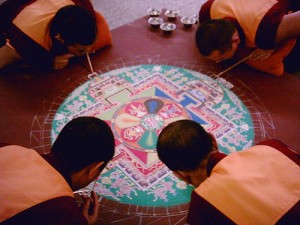
I’m always impressed by the process and outcomes when we gather in a circle. As collaborators, leveraging the power of the circle seems something we can do more of.
Our ancestors gathered around a fire in a circle. Families gather around the kitchen table in a circle. As a society we seem slow in learning that to gather in a circle is a community way to solve problems, support one another, and connect to one another.
In North American aboriginal traditions (as in many other world traditions), circles are valued as a way to build relationships and community. At the heart of the aboriginal circle process is the use of a talking piece, an object passed from person to person in the circle, and which grants the holder sole permission to speak. This tradition speaks to the need for inclusivity, listening, and taking time to hear everyone’s story.
When the tribe first sat down in a circle and agreed to allow only one person to speak at a time – that was the longest step forward in the history of law (American trial judge, Curtis Bok).
Indigenous circle traditions are more and more finding favour in the extended community:
- Schools employpeacemaking circles involving students, parents, staff, police, and community representatives (The Little Book of Circle Processes by Kay Pranis is a good introduction to peacemaking circles, and circles in general)
- Neighbourhoods conduct circles; bringing together residents, politicians, and businesses to talk about community development
- Workplaces use circles to rebuild damaged workplace relations (Maureen Fitzgerald’s book Corporate Circles is a good read on this topic)
- Social service organizations use circles in ways that enable life-changing (and saving) transformation (check out the innovative and successful work done by Molly Baldwin and Roca in Boston)
- Justice organizations use circles as a way for adult offenders to repair the harm and restore relationships (visit the International Institute for Restorative Practices for resource materials in this area)
Where does the circle process fit in your organization?
If you enjoyed this post, and would like to leave a comment, click here.
Photo credit: phauly

Our nonprofit, SCVRJP, uses Circles in a variety of contexts – for schools, for courts, for drug court. We offer Circle keeper training. Our college campus has used Circles as part of service learning reflection process, conflict or to share after a student death. The process is very powerful and is an excellent way to bring people together.
Kris
Kris, I’m impressed with all the diverse ways you are using the circle. The Circle / service learning reflection process sounds powerful, and creative. It sounds a bit like the reflection process my colleague was using, though I’m not sure I fully appreciate how you’re using it (as a reflection process). I’ll have to look more into that one… and, I’m wondering if my local RJ organization have used and/or considered something similar? Great work. Thanks for sharing.